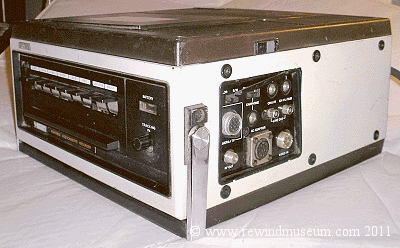David R. Busse
Well-known member
NPR today reported the 30th anniversary of the Supreme Court's Bakke decision. This was the landmark ruling that disallowed racial quotas for college admission.
Politics aside, it was a landmark ruling in my life.
"Reaction to Bakke decision..." was the first story I ever shot on ENG. I'd been with WAVE-TV, Louisville, for about a month and was dispatched with reporter John Rawlins and producer Linda Broadus to the University of Louisville for the local angle. The story came down at mid-day during a busy day in our newsroom. I had been doing 1-2 hours of training on ENG and was promised that my first field assignment would be something easy and simple, on a slow day.
We news people know what a hollow promise that usually turns out to be.
I was sent out the door with a TK-76A, a couple of 3/4" tapes and an ancient Sony BVU-100 tape deck.
As I recall, we had an interview with a university official. UofL had a very pretty campus with a distinctive administration building. As we drove up, I suggested to reporter and producer that we "bring the guy outside." I wasn't being lazy--I simply suggested the interview would look more collegiate sitting across the campus with the admin building and white columns behind him, out of focus, with lav mics and the "network look.". It looked great and I soon realized this theory of making the interview look like a portrait was something my mentor Leigh Wilson had taught me at Mizzou and was something they'd never heard at WAVE before.
We shot campus stuff and went over to the medical school, where we shot students in a biology lab. I remember being blown-away by the ability of the TK76 viewfinder to be oriented for odd-angle shots and the "what you see is what you get" business about shooting ENG.
(Remember--I had never touched an ENG camera until this day. I was a film shooter).
I don't recall being nervous until we got back to the station. I had fiddled with the edit system about 15 minutes before this assignment, so our news e.p., Pat Trapf (a very good editor in her own right) sat down and edited the story.Somewhere in my garage, I still have a 3/4" tape of the finished product.
It was a good story on the air and my boss, the late Larry Pond, accused me good-heartedly of having lied about my inexperience with ENG.
For the remaining two years of my Louisville experience, I tried to shoot ENG whenever possible.
Now, exactly 30 years later, I'm a week away from abandoning my Betacam SX camera and starting two weeks of training on Panasonic P2 tapeless cameras and Edius non-linear editing.
Has it been 30 years? Naaah....
Politics aside, it was a landmark ruling in my life.
"Reaction to Bakke decision..." was the first story I ever shot on ENG. I'd been with WAVE-TV, Louisville, for about a month and was dispatched with reporter John Rawlins and producer Linda Broadus to the University of Louisville for the local angle. The story came down at mid-day during a busy day in our newsroom. I had been doing 1-2 hours of training on ENG and was promised that my first field assignment would be something easy and simple, on a slow day.
We news people know what a hollow promise that usually turns out to be.
I was sent out the door with a TK-76A, a couple of 3/4" tapes and an ancient Sony BVU-100 tape deck.
As I recall, we had an interview with a university official. UofL had a very pretty campus with a distinctive administration building. As we drove up, I suggested to reporter and producer that we "bring the guy outside." I wasn't being lazy--I simply suggested the interview would look more collegiate sitting across the campus with the admin building and white columns behind him, out of focus, with lav mics and the "network look.". It looked great and I soon realized this theory of making the interview look like a portrait was something my mentor Leigh Wilson had taught me at Mizzou and was something they'd never heard at WAVE before.
We shot campus stuff and went over to the medical school, where we shot students in a biology lab. I remember being blown-away by the ability of the TK76 viewfinder to be oriented for odd-angle shots and the "what you see is what you get" business about shooting ENG.
(Remember--I had never touched an ENG camera until this day. I was a film shooter).
I don't recall being nervous until we got back to the station. I had fiddled with the edit system about 15 minutes before this assignment, so our news e.p., Pat Trapf (a very good editor in her own right) sat down and edited the story.Somewhere in my garage, I still have a 3/4" tape of the finished product.
It was a good story on the air and my boss, the late Larry Pond, accused me good-heartedly of having lied about my inexperience with ENG.
For the remaining two years of my Louisville experience, I tried to shoot ENG whenever possible.
Now, exactly 30 years later, I'm a week away from abandoning my Betacam SX camera and starting two weeks of training on Panasonic P2 tapeless cameras and Edius non-linear editing.
Has it been 30 years? Naaah....



